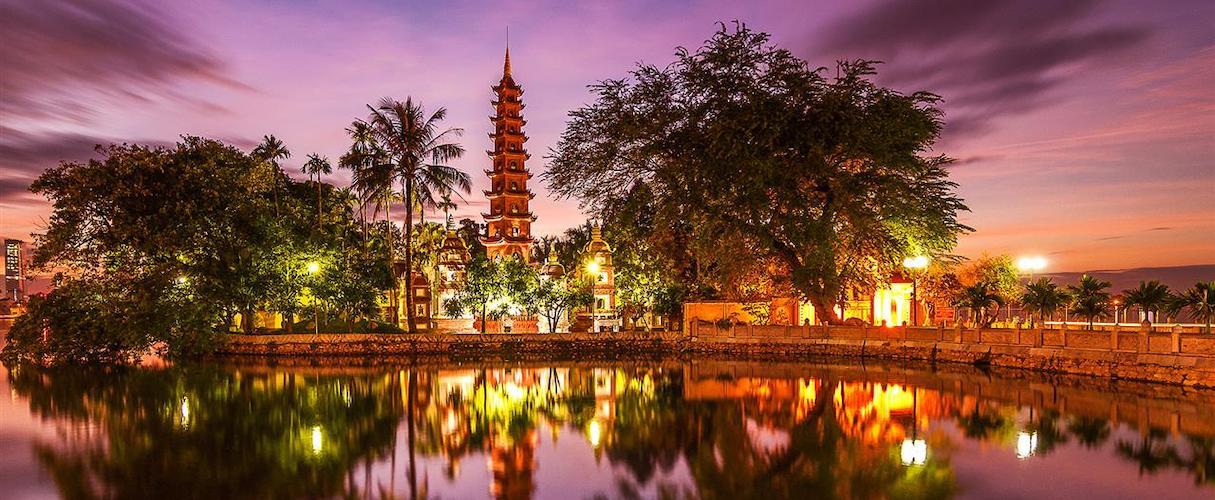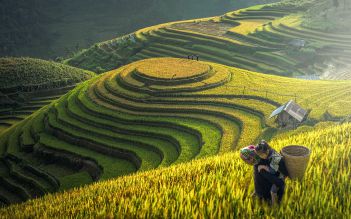Overview
Located in the east of West Lake, Tran Quoc Pagoda with the age of more than 1500 years is the oldest and most sacred temple in Hanoi. Once a Buddhist center of Thang Long under Ly - Tran, Tran Quoc pagoda has now become an attractive spiritual destination of the capital, attracting a lot of tourists to visit every year.
The history of Tran Quoc Pagoda
Tran Quoc Pagoda was initially named Khai Quoc Pagoda, built in 541 under the Ly Dynasty. At that time, the pagoda was located near the bank of the Red River, so when the dike collapsed in 1615 (the reign of King Le Trung Hung), the pagoda was relocated to the inside of Yen Phu dike in Kim Nguu mound.
Later, in the 17th century, Trinh Lord built dikes of Co Ngu (now Thanh Nien Road) to connect with the Kim Nguu island. The pagoda changed its name to Tran Quoc pagoda in the reign of King Le Hy Tong (1681 - 1705) with the meaning of wanting this place to help people dispel natural disasters and bring peaceful life. And that name is used until today.

Tran Quoc Pagoda
Formerly, Tran Quoc Pagoda was the Buddhist center of Thang Long Citadel. Ly and Tran Kings still used to worship and dwell in offerings on holidays and Tet at the temple.
The unique architecture of Tran Quoc Pagoda
Like an ancient temple, Tran Quoc Pagoda has undergone many restoration works. Its appearance has changed somewhat, its size and architecture were now the results of a major restoration in 1815. The total area of the temple is more than 3000m2, including the tower garden, the ancestral house, and the upper palace.
The pagoda belongs to the Northern tradition with the structure and architecture according to the strict principles of Buddhism including three main houses: the front hall, the burning incense house, and the upper palace which connect together.

Tran Quoc Pagoda
The front hall faces the west. Two corridors are located on both sides of the burning house and the upper palace. Behind the upper palace is a bell tower on the central hall axis with a three-story structure with a matchbox roof.
The main house is located on the left side of the upper palace, and the left is the stele house that still houses 14 steles with many historical and cultural values.
Through many ups and downs of time, Tran Quoc Pagoda still lies majestically, bringing the peaceful but ancient features of bustling Hanoi. Every year, the pagoda attracts a high number of Buddhists, domestic and foreign tourists who come to offer incense, Buddha ceremonies as well as visit temples.




